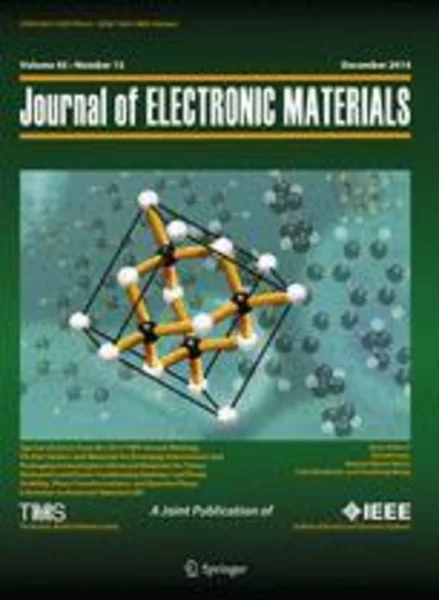-
numerical simulation of performance and thermomechanical behavior of thermoelectric modules with segmented bismuth-telluride-based legs
جزئیات بیشتر مقاله- تاریخ ارائه: 1392/07/24
- تاریخ انتشار در تی پی بین: 1392/07/24
- تعداد بازدید: 947
- تعداد پرسش و پاسخ ها: 0
- شماره تماس دبیرخانه رویداد: -
numerical simulation of performance and thermomechanical behavior of thermoelectric modules with segmented bismuth-telluride-based legsthe approach of using segmented legs to build thermoelectric (te) modules can enhance the performance of te generators. this approach is based on the selection of materials for different segments that are optimized in terms of their te properties with respect to the temperature range to which they are exposed during module operation. for this purpose, by carefully controlling the chemical composition of ternary and quaternary bismuth-telluride-based alloys, we have optimized the figure of merit zt of p-type and n-type alloys implemented by a powder technology approach. the alloys were prepared by mechanical alloying followed by hot extrusion, and their mechanical and te properties were fully characterized as a function of temperature, which gave us a solid database for simulation of modules containing these materials. finite-element numerical simulation was applied to evaluate the impact of te materials properties on the level of mechanical stresses generated by thermal gradients in modules made of segmented legs. keeping the same total length of two-segment p- and n-type legs, the relative length of each segment was varied to obtain an 8% relative increase of generated electrical power compared with homogeneous legs of the same total length. under these conditions, the presence of solder interface between the two segments and between the segments and the copper conductors of the module concentrates plastic strain, leading to a significant reduction of the stress level in the te materials compared with that resulting from using nonsegmented legs. leg segmentation not only leads to improved te performance but could also significantly modify the maximum values and distribution of thermomechanical stresses in the modules, depending on how it is realized. the study presents how this numerical simulation tool can be used to optimize the design of segmented modules.
مقالات جدیدترین رویدادها
-
استفاده از تحلیل اهمیت-عملکرد در ارائه الگوی مدیریت خلاقیت سازمانی و ارائه راهکار جهت بهبود
-
بررسی تاثیر ارزش وجوه نقد مازاد بر ساختار سرمایه شرکت های پذیرفته شده در بورس اوراق بهادار تهران
-
بررسی تأثیر سطح افشای ریسک بر قرارداد بدهی شرکت های پذیرفته شده در بورس اوراق بهادار تهران
-
بررسی تأثیر رتبه بندی اعتباری مبتنی بر مدل امتیاز بازار نوظهور بر نقد شوندگی سهام با تأکید بر خصوصی سازی شرکت ها
-
تأثیر آمیخته بازاریابی پوشاک ایرانی بر تصویر ذهنی مشتری پوشاک ایرانی (هاکوپیان)
-
ارزیابی نقش دلبستگی به مکان درطراحی سیتی هال اهواز
-
معرفی روش نوین آنالیز سریع آسیب پذیری لرزه ای ساختمانها و کاربرد آن در مدیریت بحران با بهره گیری از تکنیک gis
-
نقش فن آوری اطلاعات و ارتباطات در فرایند یاددهی – یادگیری درمحیط های آموزشی
-
using neural & fuzzy-neural approaches in school trip distribution modeling
-
solution of two-dimensional shallow water equations by tvd-maccormack scheme
مقالات جدیدترین ژورنال ها
-
مدیریت و بررسی افسردگی دانش آموزان دختر مقطع متوسطه دوم در دروان کرونا در شهرستان دزفول
-
مدیریت و بررسی خرد سیاسی در اندیشه ی فردوسی در ادب ایران
-
واکاوی و مدیریت توصیفی قلمدان(جاکلیدی)ضریح در موزه آستان قدس رضوی
-
بررسی تاثیر خلاقیت، دانش و انگیزه کارکنان بر پیشنهادات نوآورانه کارکنان ( مورد مطالعه: هتل های 3 و 4 ستاره استان کرمان)
-
بررسی تاثیر کیفیت سیستم های اطلاعاتی بر تصمیم گیری موفق در شرکتهای تولیدی استان اصفهان (مورد مطالعه: مدیران شرکتهای تولیدی استان اصفهان)
-
بررسی نقش مدیریت منابع انسانی پویا در ارتقاء بهره وری و عملکرد کارکنان شرکت آپاداناسرام
-
عقد ضمان در نظام بانکی
-
بررسی اصول و مبانی اثر معنویات دینی در زندگی اجتماعی دانش آموزان
-
دکترین رس ایپسا لوکویتور و کاربرد آن در مسئولیت مدنی res ipsa loquitur
-
the relationship between working capital management and criterions for value-based performance of the companies listed in tehran stock exchange




سوال خود را در مورد این مقاله مطرح نمایید :